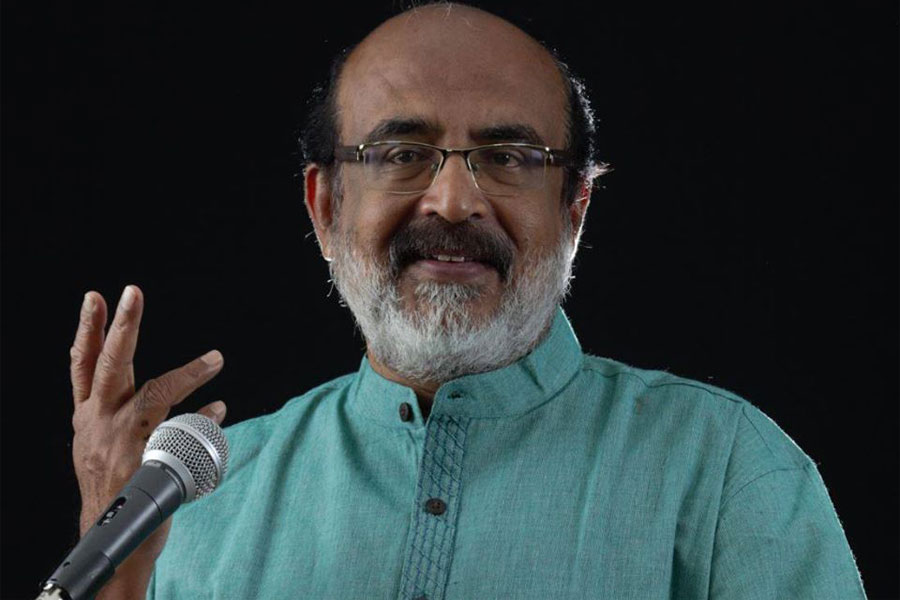Kerala is perilously perched on a financial volcano that is ready to erupt any time. Finance minister T M Thomas Issac misses no opportunity to talk about the impending financial anarchy and blames it on the Centre ad nauseam. It may be politically expedient to do so, but the unfortunate reality is that the state has been following an unsustainable model of economic development.
With virtually no industrial and manufacturing base, there is no wealth creation in the state and as such, the government has only limited means to earn revenue. The revenue collection has remained static at 10 percent or below, but the expenditure has been mounting at 16 percent, which means that the collection has plummeted despite the steady growth in spending.
This has, however, not stopped the government from its prodigal ways of spending, for which it has to borrow from all kinds of sources, often at prohibitively high rates. With each borrowing, the public debt is ballooning and the per capita debt is already unduly high. The public debt is estimated to have nearly doubled from Rs 78,673.24 crore to Rs 1,50,000 crore in the five years from 2011 to 2016. This has further spiralled under the present government as it has gone on a borrowing spree.
At any given time, the state overshoots the permissible limit of 3 percent of the state’s gross domestic product (SGDP) for borrowing, which gives the Centre an excuse to delay even overdue payments. Kerala has been pleading with the Centre for higher annual borrowing limit, but not only has the clamour fallen on deaf ears, its predicament has become even worse, with the Modi government effecting a cut of Rs 6,000 crore in the permissible annual borrowing.
It is virtually a hand-to-mouth existence. Nearly all of what the government earns is spent on salaries and pensions. According to available data, Kerala has the highest per capita share of salaries and pension among all states.
It is time the state took a hard look at its development model. The skewed approach of ensuring welfare through government employment flies on the face of rationality. Welfare to be sustainable has to be based on productivity and wealth creation, neither of which seems to be a concern for successive governments.
The government pats itself for providing employment in the government sector, which has become a bane of the Kerala society. People go to any extent to get into government service and employ all means, fair and foul, to achieve their goal. In fact, this has been a major reason for the growth of corruption and nepotism as the ruling parties abuse the system and the institutions to favour their activists and sympathisers.
The mark list and answer paper scandals, abuse of public service commission, marks moderation by university managements are all symptoms of this deepening malady, which is threatening the very foundation of the rule of law.
The government’s development rationale fails to acknowledge that every person accommodated in the government service means denying the opportunity to thousands of others. The privileged few are looked after by the state at the cost of the vast majority, who continue to suffer. And for the chosen ones, the good fortune extends beyond their retirement. The pensions bill is, for instance, are almost half as big as the total salary demand, which shows the extent to which the state is expending on unproductive resources.
In reality, this amounts to organised loot that has been perpetuated with the patronage of the government, political parties and the trade unions. They all talk about social welfare, but feign ignorance about the welfare of those who are excluded from all the largesse and have to fend for themselves. This is being done through organised trade unions, which are obsessed with only their own members.
Trade unions were born out of a need to protect workers from the exploitative tendencies of capitalism and played a salutary role in safeguarding the interests of workers. However, along the way, things have changed and union activism increasingly saw the unions pitting themselves against the rest of the people and holding the society to ransom.
Unity has become an exploitative tool for organised labour to corner all the benefits of development and progress to the exclusion of the vast majority, who get no salary, no overtime, no provident fund, and no paid holiday. The privileged are feasting on the miseries of the majority.
In their desperation to defend their turf, the bureaucracy and the organised sector have often taken positions that obstructed progress and a more equitable distribution of national resources. The banking sector is a classic example. Today it is impossible to imagine banking without technology. However, when efforts were first made to introduce computerisation in its most basic form, the banking trade unions opposed it tooth and nail.
The state government finances are constantly moving from one crisis to another. Treasury shut-downs have become a matter of routine and bills worth thousands of crores are pending indefinitely for clearance.
The financial crunch has not only disrupted salary payments of utility corporations, such as the Kerala State Road Transport Corporation (KSRTC), always in the news for the wrong reasons, but hit disbursals under the Karunya health scheme, which provides succour to millions of families. Insurance companies participating in the scheme have refused to pay the hospitals, which have stopped attending to patients, as the government has not paid their premiums. This has created a real crisis in the healthcare sector, which boasts high rankings for Kerala among all the states.
It is a pity that the government is depending on income from the manufacture and sale of liquor and the running of lottery to raise resources, both of which are considered unethical in many parts of the world.
According to a statement made in the state assembly recently, there were only 29 liquor bars in the state before the present government assumed office, but today their number has increased to 565 liquor bars and 365 beer parlours. It is another matter that the Left Democratic Front (LDF) had come to power with “liquor abstinence” as their stated policy.
Recently, Chief Minister Pinarayi Vijayan announced in his weekly television show that the government was exploring the possibility of allowing pubs so that patrons can enjoy the spirit in a more convenient and comfortable ambience. The move is apparently meant to service the needs of professionals like IT staff, who work in late hours, but do not have the decent means to enjoy an evening after the day’s hard work.
This may just be a pretext. The real reason could be that the government cannot think of more creative ways to shore up its revenues.
Kerala holds the record for the highest per capita consumption of liquor in the country. According to published data, each Keralite consumes over 8 litres of alcohol per year, which is well above the national average of 5.7 litres.
A couple of pegs of hard liquor or mugs of beer are considered to be an essential part of the evening of an average Keralite, some of whom are heavy drinkers.






